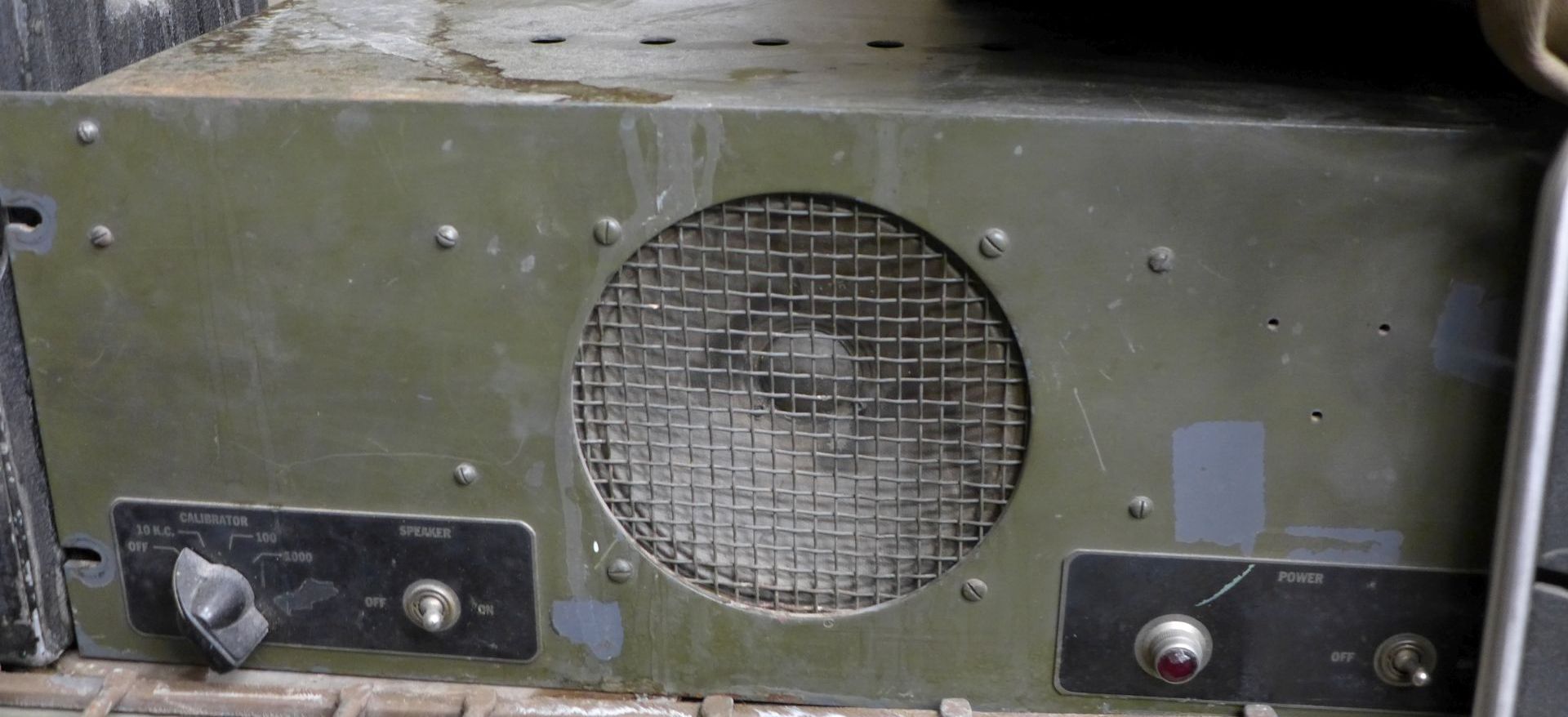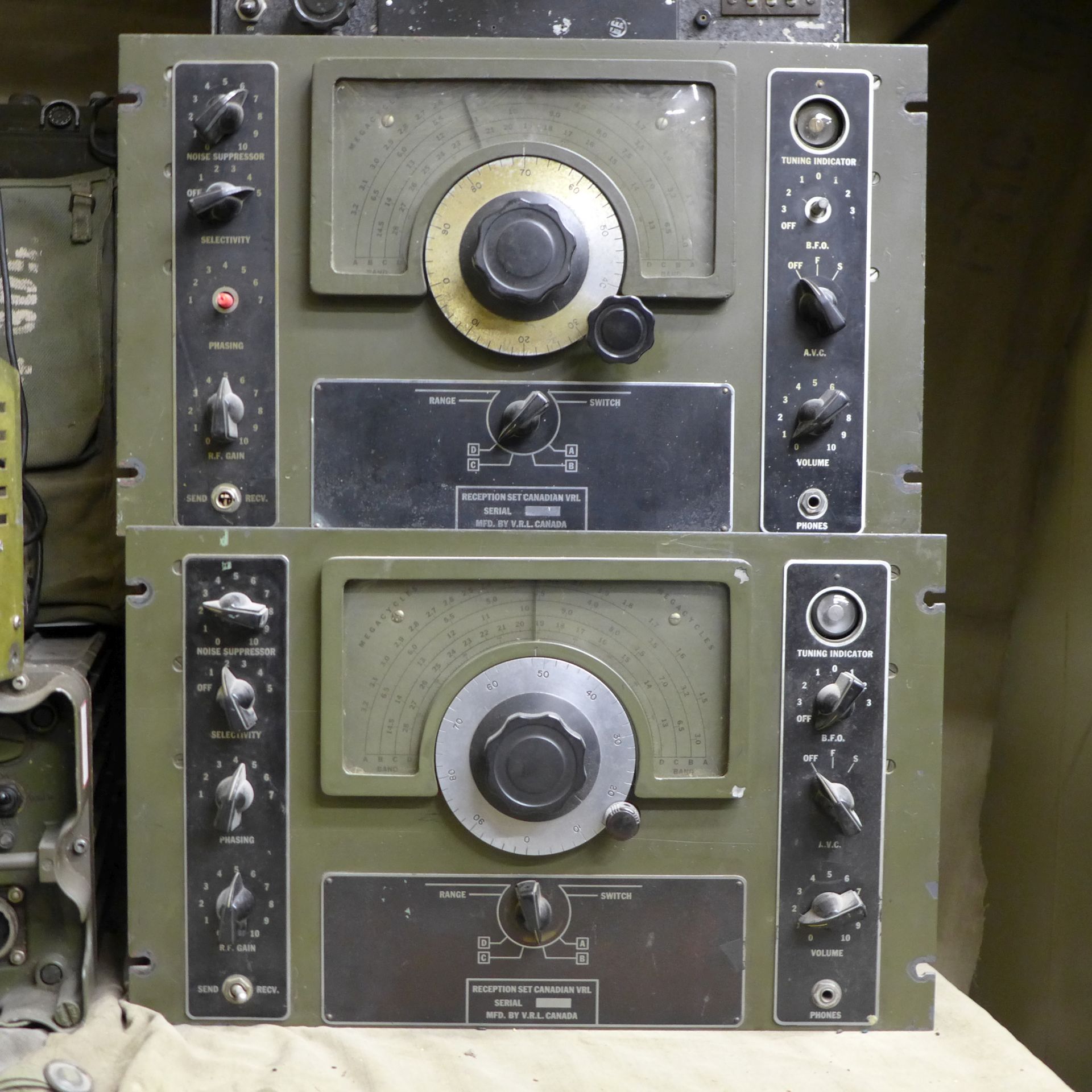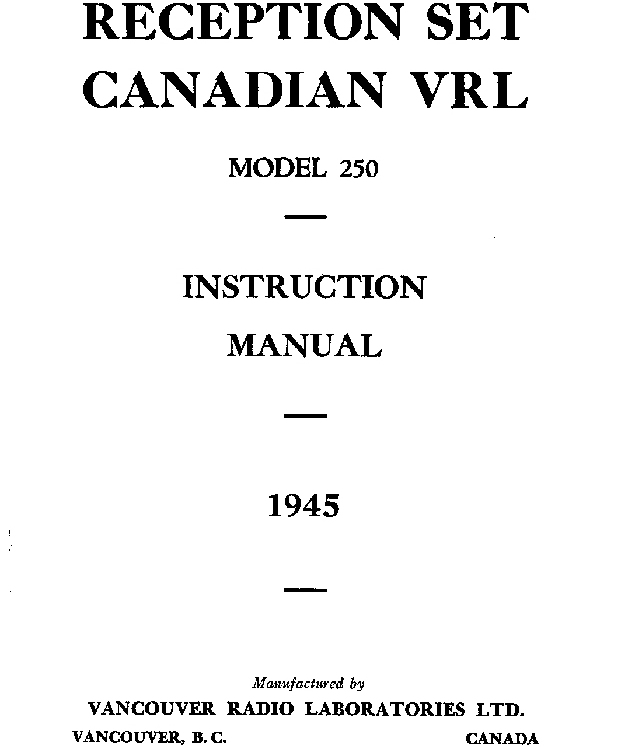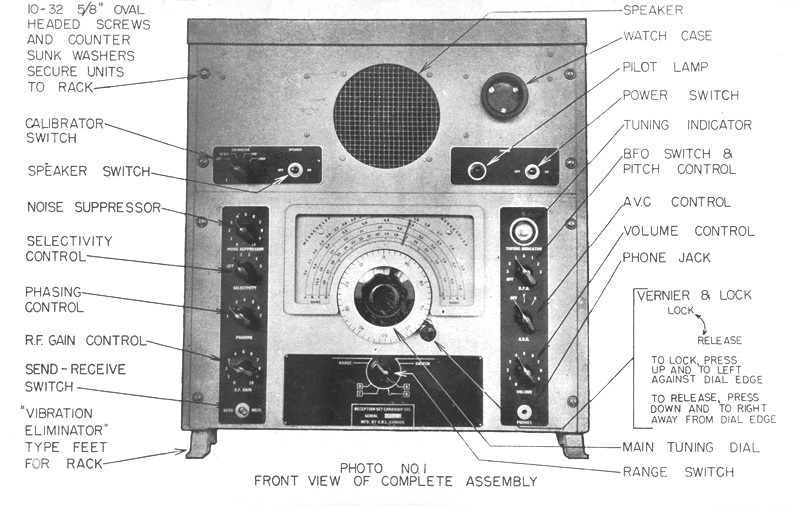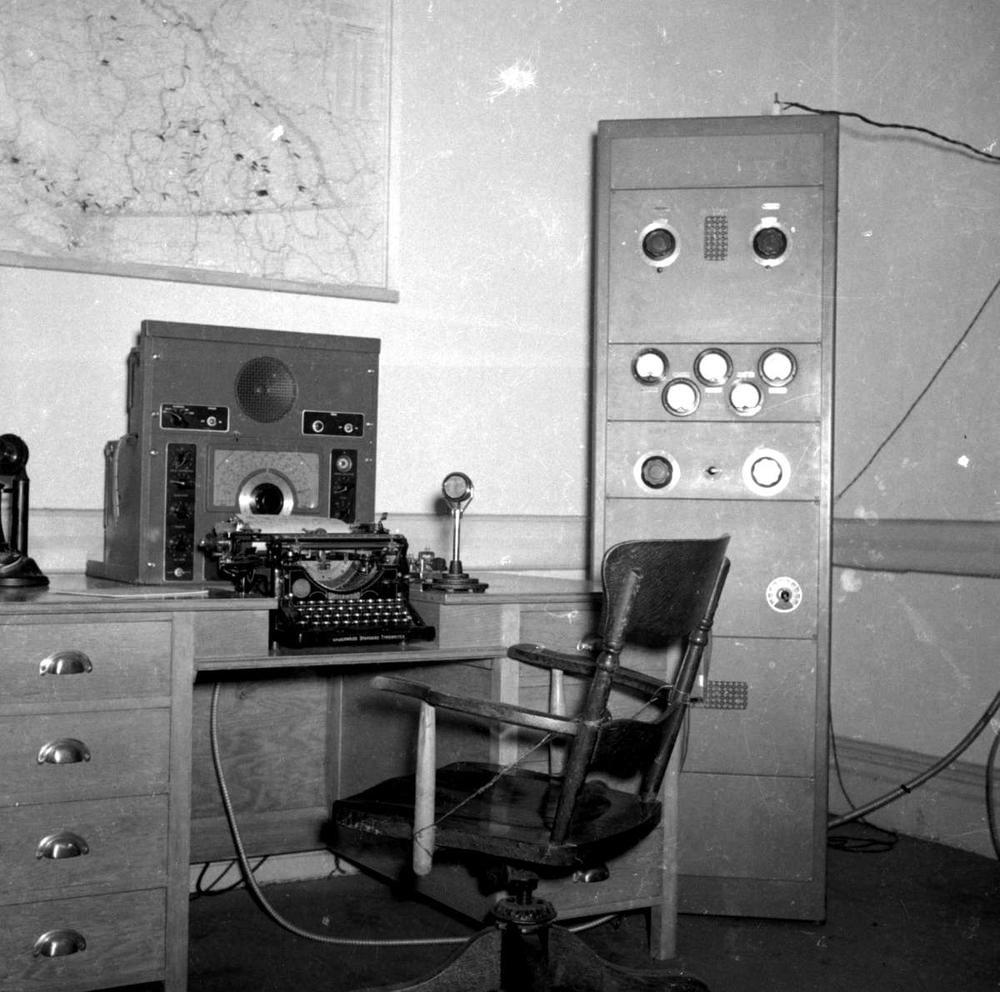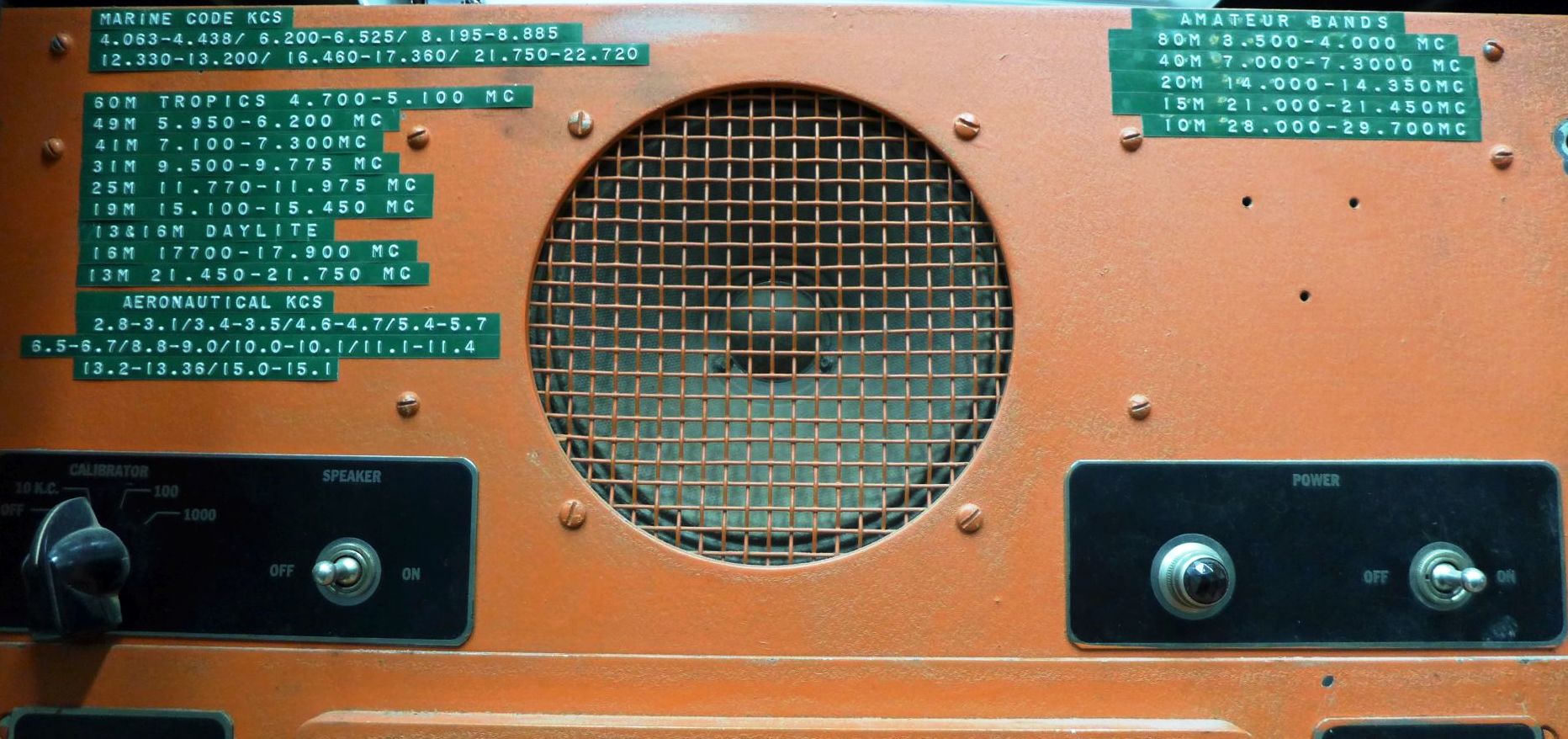The 43 set is called "Transmitter Canadian No. 43 Mk II. The "Temporary working instructions" are H.Q.S. 9070-12-11 (DECD) dated 15 June 1943. The final manual was produced in 1945. The entire 43 set is usually referred to as the W.S. Canadian No. 43 Mk II. Philips (?) produced the transmitter portion. It was designed to fit in a 30 HWT truck along with a generator.
Jim Fleming provides this additional description of the 43 set:
"The final manual that I have is HQS9070-12-11 (DECD) ZA/CAN5911 dated March 3 1945. This manual is much more comprehensive than the interim version.
The transmitter has two 813s in parallel in the final and the oscillator, modulator, multiplier and drivers are all 807s. The transmitter frequency range is 2 to 5 MHz and 5 to 12 MHz in two ranges. The power output is 250 watts on RT. and MCW and 500 watts on CW. The total weight (transmitter and power supply) is 610 lbs. The power supply is a separate unit and is pictured under the transmitter. The transmitter has separate VFO oscillator, multiplier and final tuning sections and controls for each range. The right hand side of the transmitter is used with the lower range 2 to 5 MHz and the left hand section is for the higher range 5 to 12 MHz. The tubes in the oscillator, multiplier and final are common to both ranges and the range selection switch switches them back and forth. Only one range can be used at a time, but the two frequencies can be pretuned and switched instantly. There is also an optional crystal oscillator adaptor which my unit contains.
The modulator is controlled by either push to talk or voice activated control and is a single 807 using grid modulation of the two final 813s. The manual goes into significant detail regarding the installation on a 30 cwt Lorry complete with a 15 cwt trailer. The installation had a 12 ft, 16 ft and 36 ft whip antenna along with the capability to connect long wire antennas when stationary. (there is a note discouraging the use of the 36 foot whip while in motion). The entire system was designed to work with the same field devices (remote telephones and keys) as the 19 sets."
The companion receiver which forms part of the 43 set was the Vancouver
Radio Labs VRL250 or the Stewart-Warner RPA-3" These are discussed separately
below.
 |
| Front view of 43 set. This example appears to have never been used. |
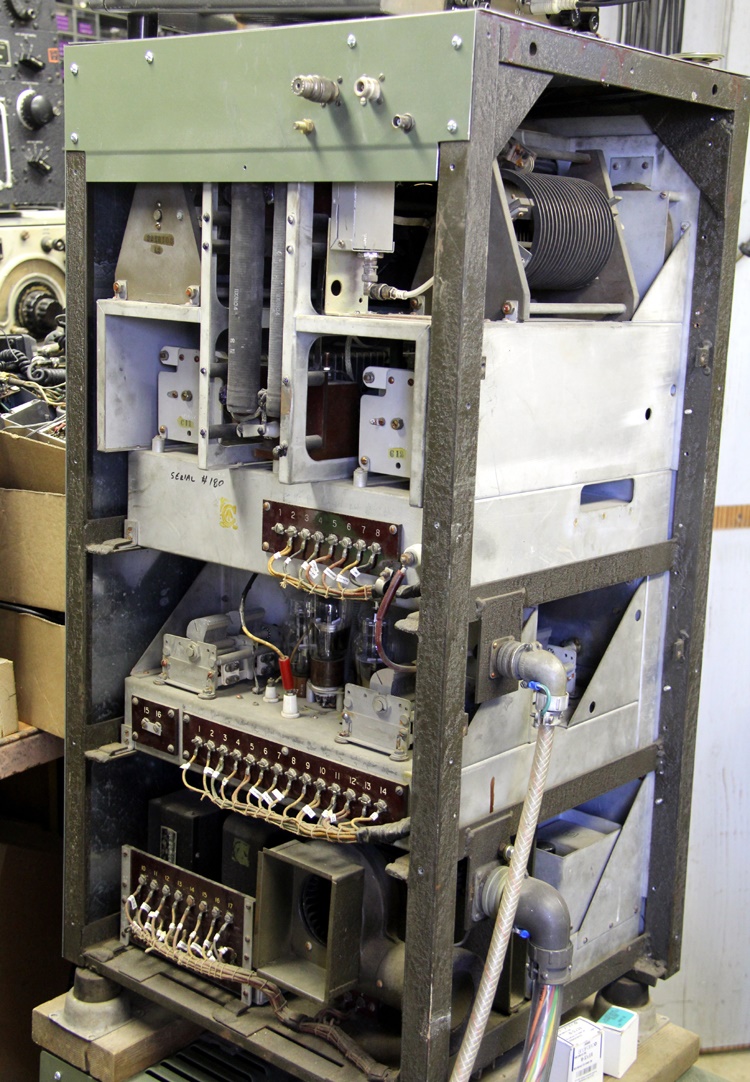 |
| 43 set rear view. It has two oscillators and two out put sections using a pair of 813s. It is believed that one oscillator and output tube is for a higher frequency range than the other. The original RF connectors were feed-through insulators on the top just like the AT3. These were removed and replaced with type N connectors. |
 |
| 43 set RF amplifier deck. The transmitter also contains a dummy load |
| All photos in this table by Jim Fleming VE3PBJ |
